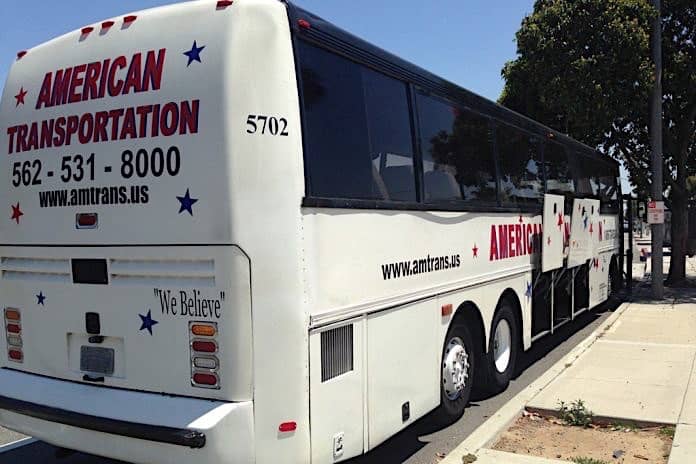The National Highway Traffic Safety Administration proposed a new rule to enhance rollover structural integrity of motorcoaches and “over-the-road” buses in the event of a crash to improve roof strength. The proposal comes on the heels of a new requirement implemented last year to require lap-shoulder seat belts on motorcoaches to improve passenger safety.
The latest Notice of Proposed Rulemaking would require that newly manufactured large buses comply with a “roof-crush” test that tips vehicles over from an 800 mm raised platform onto a level ground surface. NHTSA stated in the Federal Register that the performance requirements would ensure motorcoaches provide “a sufficient level of survival space” to restrained occupants in a rollover crashes.
“We have issued this NPRM in furtherance of NHTSA’s goal to enhance the safety of all heavy buses used in intercity bus transportation, including over-the-road buses, which were the focus of the Motorcoach Enhanced Safety Act of MAP-21,” wrote NHTSA. “Similar to the seat belt rule, we are not proposing that this standard apply to school buses and urban
transit buses.”
NHTSA considered the school bus roof crush standard in FMVSS 220 but said it chose to base its proposed test standard on the United Nations Economic Commission for Europe Regulation 66. NHTSA explained in the proposed rule that ECE 66 “appears to more closely simulate a real-world rollover crash involving the large bus types that are associated with the highest crash risk.”
NHTSA added that ECE R. 66 also enables the agency to better evaluate the affixing of side glazing panels, an area of concern of MAP-21, and the attachment of overhead luggage racks. Developing a procedure based on ECE R.66 also furthers NHTSA’s efforts to harmonize with international standards “when feasible,” wrote the agency.
NHTSA added that while fatal rollover crashes account for an average of only one-third of all fatal crashes involving these bus types, they represent more than half of all the occupant fatalities. The agency added that approximately two-thirds of the rollover crash fatalities resulted in occupant ejections.
The performance requirements would also ensure that seats and overhead luggage racks remain secured and window glazing attached to its mounting during and after a rollover crash. Emergency exits would also need to remain closed during the rollover crash and operable after the crash.
The NPRM was developed in response to National Transportation Safety Board recommendations made back in 2000 and reiterated several times since. From 2000 through 2009, NHTSA said there were 87 fatal motorcoach crashes that claimed the lives of 209 people, 168 of which were passengers and 41 drivers. NHTSA added that 32 fatalities were a direct result of rollover crashes.
This equates to an average of 21 fatalities a year in these crashes, compared to an average of six a year in school bus crashes.


















